Understanding natural language processing (NLP) and its role in ChatGPT
In the modern era, natural language processing (NLP) plays a crucial role in various artificial intelligence (AI) applications. It has become increasingly important for facilitating effective communication between humans and machines. One such AI application that heavily relies on NLP is ChatGPT.
In this blog post, we will delve into the significance of NLP and how it relates to ChatGPT, exploring the profound impact it has on human-machine interactions.
NLP's relevance to ChatGPT and its impact on human-machine interactions
NLP is a field of AI that focuses on enabling computers to understand and generate human language. It encompasses a set of techniques and algorithms that process and analyse text-based data. When it comes to ChatGPT, NLP plays a vital role in shaping its capabilities to engage in meaningful conversations with users.
The fusion of NLP with ChatGPT allows the system to comprehend and interpret human language inputs accurately. By understanding the nuances of grammar, syntax, and context, ChatGPT can generate human-like responses that are contextually appropriate and coherent. This ability to mimic human conversation enhances the quality of human-machine interactions, making them more intuitive and natural.
NLP empowers ChatGPT to break down text into meaningful units known as tokens through a process called tokenization. It also enables the system to analyse the structure and inflections of words through morphological analysis. By applying part-of-speech tagging, ChatGPT gains an understanding of the grammatical role of each word in a sentence. Furthermore, NLP techniques such as named entity recognition (NER) allow ChatGPT to identify and classify named entities like names, locations, and organisations.
NLP goes beyond surface-level understanding by incorporating sentiment analysis. This technique helps ChatGPT comprehend the emotional tone of text, enabling it to respond appropriately based on the overall sentiment (positive, negative, or neutral) conveyed. By leveraging these NLP techniques, ChatGPT can interpret user inputs more accurately and generate personalized and contextually relevant responses.
In summary, NLP plays a critical role in ChatGPT's ability to comprehend and generate human language. By leveraging NLP techniques and algorithms, ChatGPT enhances human-machine interactions by generating human-like responses that are coherent and contextually appropriate. This fosters more natural and intuitive communication between users and AI systems, revolutionising the way we engage with machines in the digital age.
What is Natural Language Processing?
Natural Language Processing (NLP) is a branch of artificial intelligence that focuses on the interaction between computers and human language. It involves the development of algorithms and techniques that enable computers to understand, interpret, and generate human language in a way that is similar to how humans communicate with each other.
The purpose of NLP is to bridge the gap between human language and machine understanding. It aims to enable computers to comprehend the complexities of human language, including grammar, syntax, semantics, and context. By developing models and algorithms that can process and analyse text-based data, NLP seeks to make computers more capable of understanding and generating human language accurately.
The goal of NLP is to create systems that can understand and respond to human language in a manner that is meaningful and contextually appropriate. It involves various subtasks such as text classification, information extraction, sentiment analysis, machine translation, and question answering. NLP algorithms are designed to break down text into smaller units, analyse their grammatical structure, identify entities and their relationships, and interpret the overall meaning conveyed by the text.
By enabling computers to understand and generate human language, NLP opens up a wide range of possibilities for human-computer interaction. It enables the development of intelligent virtual assistants, chatbots, and language translation systems, among others. NLP has applications in customer service, information retrieval, content generation, sentiment analysis, and many other areas where human language plays a central role.
In the context of ChatGPT, NLP is crucial for empowering the system to comprehend user inputs and generate appropriate responses. It allows ChatGPT to understand the nuances of human language, including its syntax, grammar, and semantics. By leveraging NLP techniques, ChatGPT can interpret the meaning behind user queries, generate relevant and coherent responses, and engage in more natural and meaningful conversations.
In summary, NLP is a field of artificial intelligence that aims to enable computers to understand and generate human language. Its purpose is to bridge the gap between human communication and machine understanding. By developing algorithms and techniques to analyse and process text-based data, NLP plays a vital role in enhancing human-machine interactions, enabling more natural and intuitive communication between users and AI systems like ChatGPT.
Key Components of NLP
a. Tokenization
Tokenisation is a fundamental component of Natural Language Processing (NLP) that plays a crucial role in breaking down text into meaningful units called tokens. In NLP, tokens can be words, phrases, or even individual characters, depending on the specific task at hand. The process of tokenization is significant because it allows for efficient analysis and processing of text data.
By breaking down text into tokens, NLP algorithms can focus on individual units, enabling various analyses such as word frequency counts, language modeling, and text classification. Tokenization helps in understanding the structure and context of text by treating each token as a separate entity for analysis.
b. Morphological Analysis
Morphological analysis is an essential aspect of NLP that focuses on understanding the internal structure of words and their inflections. It involves breaking down words into their constituent morphemes, which are the smallest meaningful units of a word.
By analysing the morphology of words, NLP algorithms can identify word stems, prefixes, suffixes, and grammatical markers. This analysis helps in tasks such as word normalisation, lemmatisation, and identifying word relationships based on shared morphemes. Morphological analysis allows NLP systems to understand variations of words and generate more accurate language representations.
c. Part-of-Speech Tagging
Part-of-Speech (POS) tagging is a process in NLP that involves assigning grammatical tags to words in a sentence. These tags represent the syntactic category and role of each word, such as noun, verb, adjective, or adverb. POS tagging enables NLP algorithms to understand the grammatical structure of sentences, which is essential for tasks like language understanding and text generation.
By tagging words with their respective parts of speech, NLP systems gain insights into the relationships between words in a sentence, helping in tasks like parsing, information extraction, and machine translation. POS tagging enhances the accuracy of language models and enables more sophisticated language processing.
d. Named Entity Recognition (NER)
Named Entity Recognition (NER) is a key component of NLP that focuses on identifying and classifying named entities in text. Named entities refer to specific names, locations, organizations, dates, or other entities of interest in a given context. NER algorithms aim to automatically recognise and categorise these entities.
By identifying named entities, NLP systems can extract valuable information from text, such as extracting names of people or organisations, recognizing geographical locations, or identifying important dates. NER plays a vital role in various applications, including information retrieval, question answering, and knowledge extraction.
e. Sentiment Analysis
Sentiment analysis is a crucial component of NLP that aims to understand the emotions and subjective opinions expressed in text. It involves analysing the sentiment or tone of a piece of text, determining whether it is positive, negative, or neutral.
Sentiment analysis enables NLP systems to understand the overall sentiment expressed in reviews, social media posts, customer feedback, and other text data. It is used in applications such as brand monitoring, customer sentiment analysis, and social media analytics. By gauging sentiment, businesses can gain insights into customer perceptions, improve their products or services, and enhance customer experiences.
In summary, these key components of NLP, including tokenization, morphological analysis, part-of-speech tagging, named entity recognition, and sentiment analysis, are essential for understanding and processing human language. Each component contributes to the overall goal of NLP, enabling computers to comprehend and generate human language accurately, thereby facilitating more sophisticated human-machine interactions.
NLP Techniques and Algorithms
a. Word Embeddings
Word embeddings are a vital technique in Natural Language Processing (NLP) that aims to represent words as numerical vectors. These vectors capture semantic relationships between words, allowing NLP models to understand and reason about words based on their contextual meaning.
Word embeddings play a crucial role in various NLP tasks, such as language understanding, information retrieval, and sentiment analysis. They enable algorithms to interpret the meaning of words and capture their nuances, even in complex linguistic contexts. Popular word embedding algorithms include Word2Vec and GloVe, which employ different approaches to generate meaningful word representations.
b. Language Models
Language models are central to NLP as they help in understanding and generating coherent text. A language model predicts the likelihood of a sequence of words, capturing the statistical relationships between words in a given language corpus. By learning from large amounts of text data, language models acquire knowledge about grammar, syntax, and semantics, enabling them to generate contextually relevant and fluent text.
Language models have revolutionised various NLP applications, including machine translation, speech recognition, and text generation. They can autocomplete sentences, suggest next words, and even generate creative text, making them an invaluable tool in human-machine interactions.
c. Transformer Architecture
The Transformer architecture has brought significant advancements to NLP tasks and has become the cornerstone of many state-of-the-art models. Introduced in 2017, the Transformer architecture revolutionised the field by addressing the limitations of traditional recurrent neural networks (RNNs) in capturing long-range dependencies.
Transformers rely on self-attention mechanisms to efficiently process words in a sequence, enabling the model to consider dependencies between any two words, regardless of their positional distance. This capability allows Transformers to excel in tasks such as machine translation, text summarisation, and question answering, where capturing long-range dependencies is essential.
The Transformer architecture has also contributed to the success of large-scale pretraining techniques like BERT (Bidirectional Encoder Representations from Transformers) and GPT (Generative Pretrained Transformer). These models, pretrained on vast amounts of text data, have achieved remarkable performance across various NLP benchmarks.
In summary, NLP techniques and algorithms, including word embeddings, language models, and the Transformer architecture, have significantly advanced the field of Natural Language Processing. They have enabled machines to understand the meaning of words, generate coherent text, and capture complex linguistic relationships. With continued advancements in NLP, we can expect even more sophisticated language models and algorithms that further enhance human-machine interactions.
NLP and ChatGPT
NLP techniques and algorithms serve as the foundation for ChatGPT's impressive language generation capabilities. By leveraging the power of NLP, ChatGPT is able to understand and respond to text-based inputs in a remarkably human-like manner.
The application of NLP in ChatGPT begins with the preprocessing of text inputs. This involves breaking down the input into smaller, meaningful units known as tokens through a process called tokenization. Tokenization allows ChatGPT to analyse and process text at a granular level, ensuring that the model can capture the nuances and context of the input effectively.
Once the input has been tokenized, ChatGPT utilises various NLP techniques to generate appropriate and coherent responses. One of the key techniques employed is language modeling, where the model predicts the most likely sequence of words based on the context provided by the input. Language models, trained on vast amounts of text data, allow ChatGPT to generate responses that are not only contextually relevant but also linguistically sound.
Additionally, ChatGPT benefits from the advancements in word embeddings. By representing words as numerical vectors, word embeddings enable ChatGPT to understand the meaning and relationships between words. This allows the model to generate responses that reflect a deeper understanding of the input and the intended communication.
The Transformer architecture plays a pivotal role in ChatGPT's language generation process. With its ability to capture long-range dependencies between words, the Transformer ensures that ChatGPT can consider the broader context of the conversation when generating responses. This leads to more coherent and contextually appropriate output, making the interaction with ChatGPT feel more natural and engaging.
Through the integration of NLP techniques and algorithms, ChatGPT achieves its remarkable ability to understand and respond to text-based inputs. By combining tokenization, language modeling, word embeddings, and the Transformer architecture, ChatGPT can generate human-like responses that facilitate meaningful and interactive conversations.
It is important to note that while ChatGPT's language generation capabilities are impressive, the model's responses are generated based on patterns and knowledge learned from the training data. While it can provide coherent and contextually relevant responses, it may sometimes produce incorrect or biased outputs. Careful consideration and human oversight are necessary when deploying ChatGPT to ensure the generated content aligns with ethical guidelines and desired outcomes.
In conclusion, NLP techniques and algorithms are instrumental in empowering ChatGPT's language generation abilities. By utilising tokenization, language modeling, word embeddings, and the Transformer architecture, ChatGPT can understand and respond to text-based inputs in a manner that closely resembles human conversation. As NLP continues to advance, we can expect even more sophisticated and capable language models that push the boundaries of human-machine interaction.
Applications of NLP in ChatGPT
NLP plays a crucial role in enabling ChatGPT to deliver meaningful and effective conversations. Let's explore some of the key applications of NLP in ChatGPT.
a. Context Understanding
NLP techniques empower ChatGPT to grasp the context of a conversation, allowing it to generate relevant responses. By analysing the tokens and their relationships within the input, ChatGPT can comprehend the nuances and subtleties of the ongoing discussion. This context understanding enables ChatGPT to provide coherent and contextually appropriate responses, making the conversation flow more naturally.
b. Language Coherency and Fluency
NLP plays a vital role in ensuring that ChatGPT's responses are not only contextually relevant but also coherent and natural-sounding. Language models trained using NLP techniques help ChatGPT generate responses that adhere to the grammatical rules and syntactic structures of human language. By leveraging the knowledge encoded in the training data, ChatGPT can produce fluently articulated responses that are more engaging and comprehensible to users.
c. Content Filtering and Moderation
With the immense volume of user-generated content, it is essential to ensure that ChatGPT maintains appropriate and safe conversations. NLP techniques are employed to filter and moderate user inputs, flagging and preventing the generation of inappropriate or harmful responses. By using algorithms that detect offensive language, hate speech, or other objectionable content, ChatGPT can provide a safer and more controlled environment for interactions.
d. Error Detection and Correction
NLP plays a significant role in helping ChatGPT identify and rectify errors or inconsistencies in its responses. By analysing the generated text and comparing it against the expected language patterns, ChatGPT can detect potential errors, such as grammar mistakes, factual inaccuracies, or contradictory statements. Through this error detection and correction process, ChatGPT can refine its responses and provide more accurate and reliable information to users.
The integration of NLP techniques within ChatGPT enhances its overall performance and user experience. By understanding the context of conversations, ensuring language coherency and fluency, implementing content filtering and moderation, and detecting and correcting errors, ChatGPT can engage users in meaningful and productive interactions.
However, it is important to note that while NLP enables ChatGPT to deliver impressive results, it is not without limitations. ChatGPT may occasionally produce responses that seem plausible but are factually incorrect or lack the necessary sensitivity. Ongoing research and development in NLP aim to address these challenges and further refine the capabilities of language models like ChatGPT.
In conclusion, NLP brings a multitude of benefits to ChatGPT, enhancing its ability to understand and generate responses in a human-like manner. By leveraging context understanding, ensuring language coherency and fluency, implementing content filtering and moderation, and enabling error detection and correction, ChatGPT can provide more meaningful and satisfying conversational experiences. As NLP continues to evolve, we can expect even more sophisticated applications that push the boundaries of AI-powered communication.
In this blog post, we have explored the fascinating world of Natural Language Processing (NLP) and its profound impact on ChatGPT's language processing capabilities. Let's recap the key points discussed:
We started by understanding what NLP is and its purpose. NLP aims to enable computers to understand and generate human language, bridging the gap between humans and machines in communication.
We then delved into the key components of NLP. Tokenization, which breaks down text into meaningful units or tokens, plays a crucial role in NLP analysis. Morphological analysis focuses on analysing the structure and inflections of words. Part-of-speech tagging assigns grammatical tags to words in a sentence. Named Entity Recognition (NER) identifies and classifies named entities, such as names, locations, and organizations. Sentiment analysis helps understand the emotions conveyed in text by determining the overall sentiment.
Next, we explored various NLP techniques and algorithms. Word embeddings represent words as numerical vectors, enabling semantic relationships between words. Language models predict the likelihood of word sequences and generate coherent text. The Transformer architecture revolutionised NLP by efficiently processing long-range dependencies in language modeling tasks.
We then discussed how NLP underpins ChatGPT's language generation capabilities. By utilising NLP techniques, ChatGPT can understand and respond to text-based inputs, enabling dynamic and interactive conversations.
Moreover, we examined the applications of NLP in ChatGPT. NLP techniques enable ChatGPT to grasp the context of a conversation, ensuring coherent and relevant responses. Language coherency and fluency are achieved through NLP, making ChatGPT's responses natural-sounding. Content filtering and moderation ensure user-generated content is appropriate. NLP helps identify and correct errors or inconsistencies in ChatGPT's responses, enhancing the accuracy and reliability of information provided.
In conclusion, NLP plays a vital role in enabling ChatGPT's language processing capabilities. By leveraging context understanding, ensuring language coherency and fluency, implementing content filtering and moderation, and enabling error detection and correction, ChatGPT delivers engaging and meaningful conversational experiences. NLP continues to evolve, addressing its limitations and pushing the boundaries of AI-powered communication.
As we look to the future, the advancements in NLP will undoubtedly contribute to further enhancing ChatGPT and similar AI systems, bridging the gap between humans and machines and revolutionising the way we interact with technology. The power of NLP lies in its ability to facilitate seamless communication and foster a deeper understanding between humans and AI.
We encourage readers to explore ChatGPT for their own marketing purposes and see how it can benefit their business. With the potential for more advanced language models in the future, the possibilities for ChatGPT in marketing are endless.








Sign up to our newsletter for the latest insider insights, top advice and more.
We will get back to you as soon as possible
Please try again later

Shoo Social Media
137 Bolling Road
Ben Rhydding
Ilkley Leeds
LS29 8PN
01943 430245
Info@shoosocialmedia.co.uk

